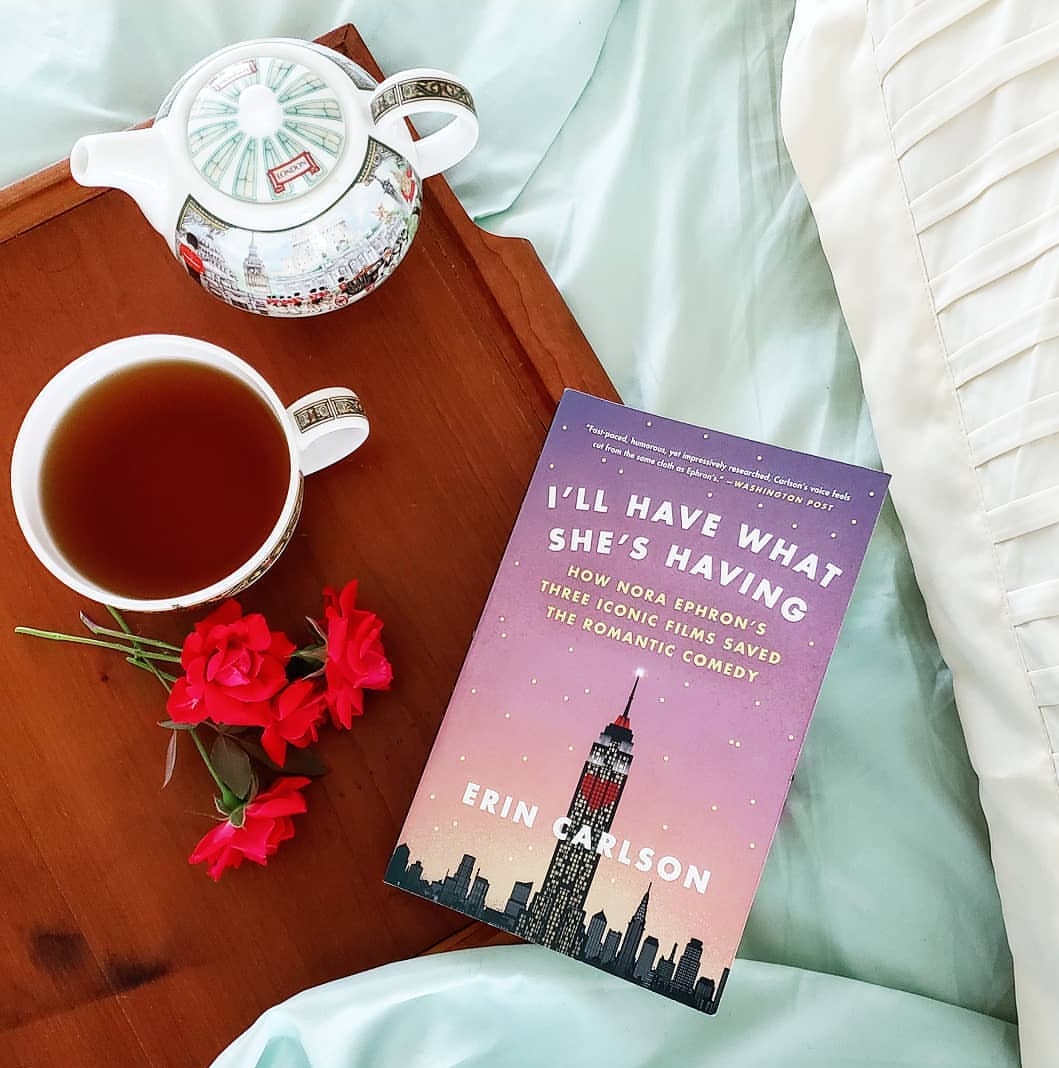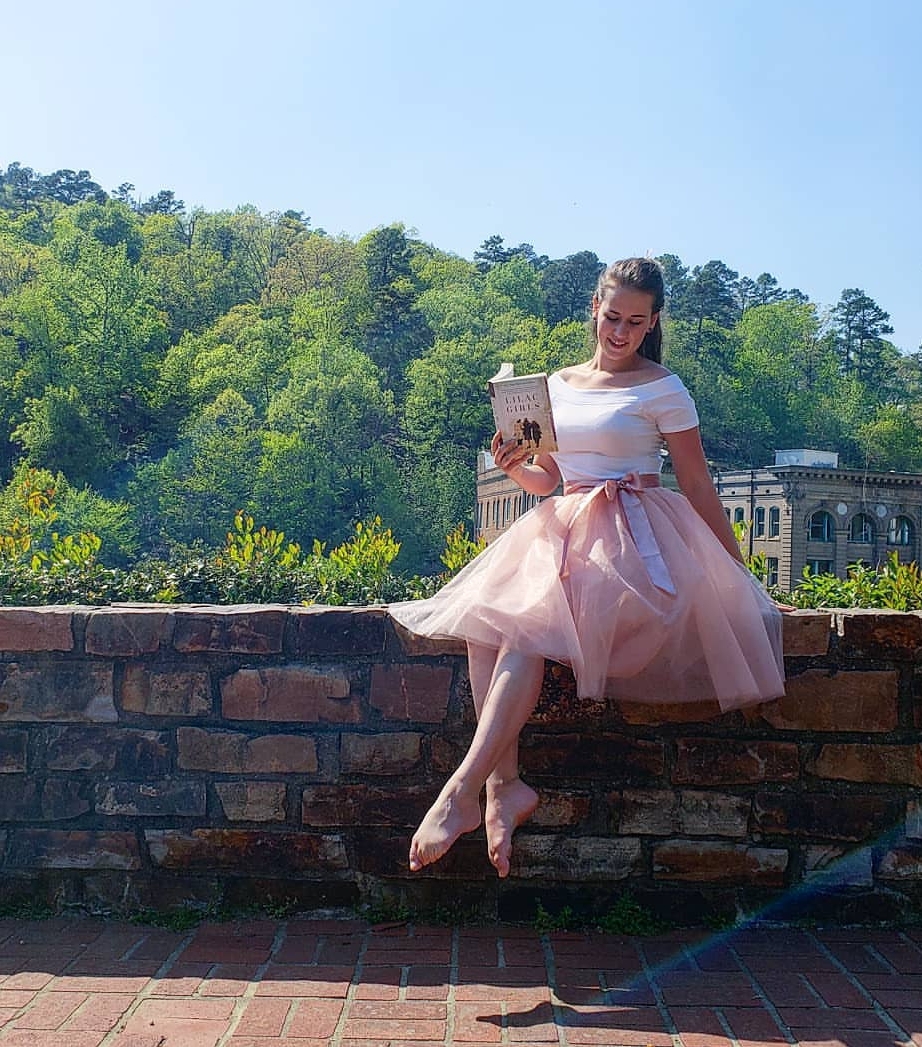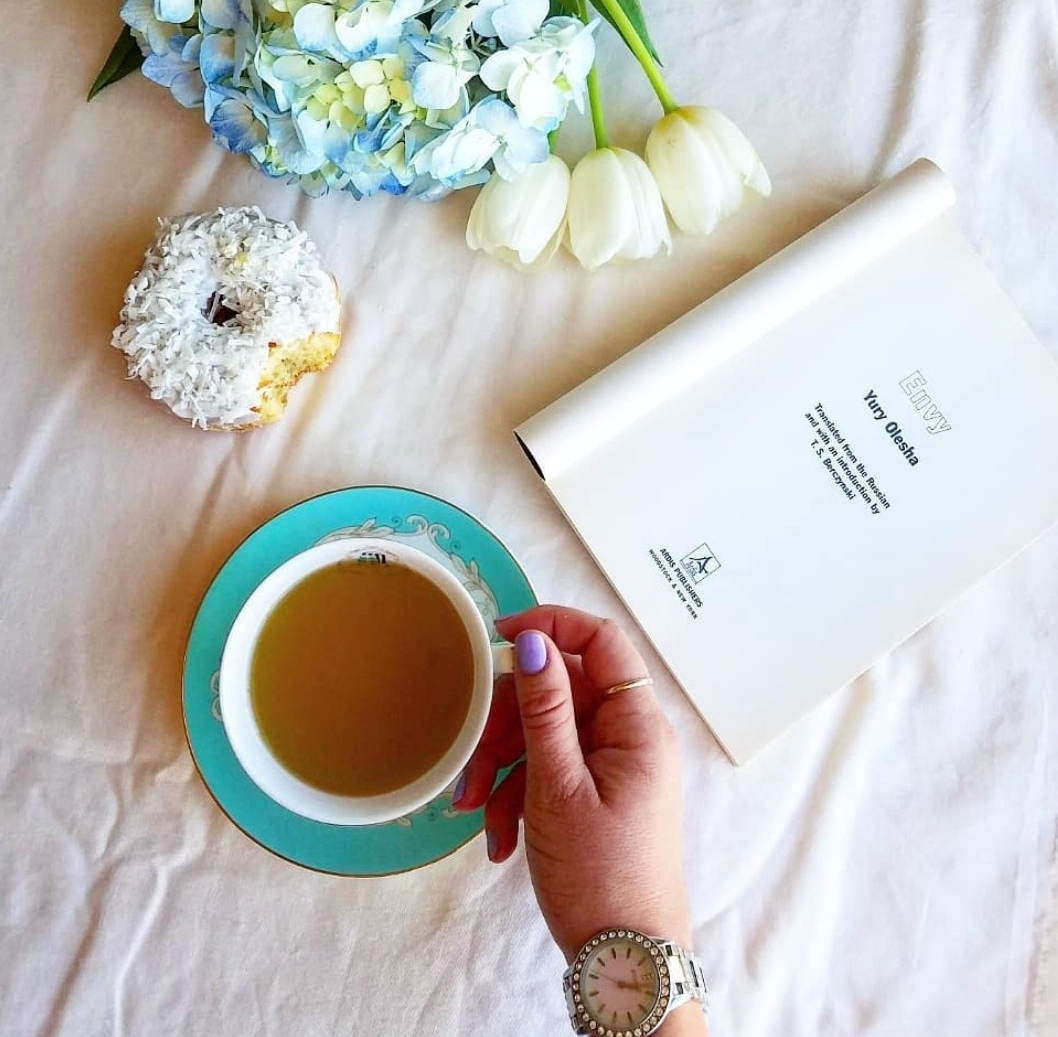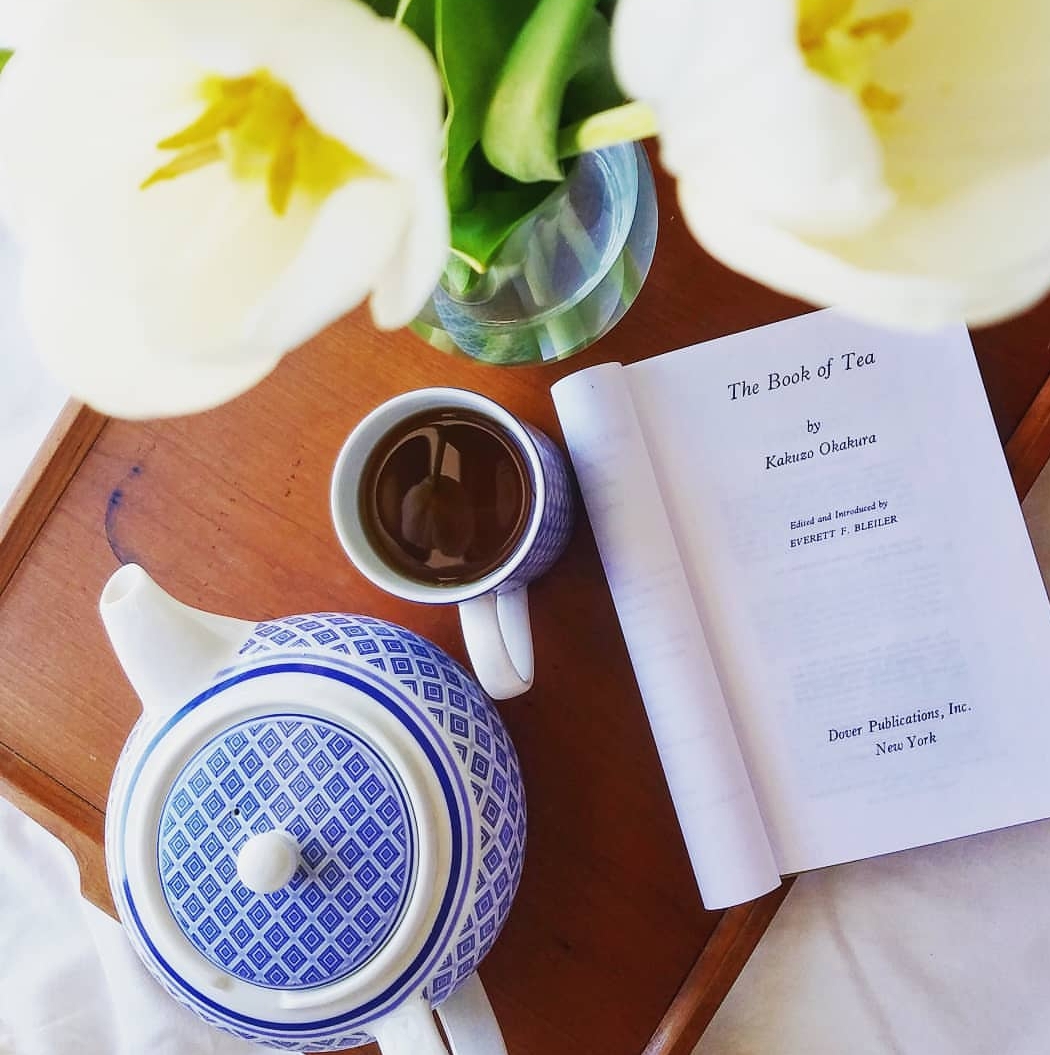Read: Yes
Difficulty: II
Length: III
Genre: NonFiction – Literary Journalism
Quick Review: Romcoms were changed by the iconic Nora Ephron when she began making her movies in the 1980’s.
Happy Birthday to Nora Ephron!
Erin Carlson’s I’ll Have What She’s Having is named after one of the most iconic lines in Romantic Comedy. Nora Ephron was a creative icon as she pushed the genre into the modern age and had a hand in some of the most talked about movies of their time and today as a talented journalist, screenwriter, producer, and director.  I grew up on Ephron movies; some I didn’t even know were Ephron movies – My Blue Heaven. She was born in New York City, but moved to LA as her parents’ screenwriting career blossomed. Never getting over her love for NYC, she moved back and never really left. Her career started out as a hard hitting journalist. She went through the dissolution of two marriages including a high profile marriage to Carl Bernstein before marrying her true love Nick Pileggi. Ephron was propelled to even greater success as a screenwriter with When Harry Met Sally. It was the first of what would be her trio of iconic films: Sleepless in Seattle and You’ve Got Mail. Though, her Hollywood credits extended much further.
I grew up on Ephron movies; some I didn’t even know were Ephron movies – My Blue Heaven. She was born in New York City, but moved to LA as her parents’ screenwriting career blossomed. Never getting over her love for NYC, she moved back and never really left. Her career started out as a hard hitting journalist. She went through the dissolution of two marriages including a high profile marriage to Carl Bernstein before marrying her true love Nick Pileggi. Ephron was propelled to even greater success as a screenwriter with When Harry Met Sally. It was the first of what would be her trio of iconic films: Sleepless in Seattle and You’ve Got Mail. Though, her Hollywood credits extended much further.
Carlson tells Ephron’s story through the making of the three iconic films. Although, it’s not the only story being told. The story of the actors, crew, and Hollywood were also unfolding throughout the book. Ephron was a unique woman combining type A personality, warmth, drive, ambition, inclusion, and so much more into a pint sized woman. One of the things that really stood out about her was her ability to collect talented people utilizing their ideas when it added to a project. Collaboration was a word people used to describe her. She was a legend in her own time. People simultaneously loved and were intimidated by her. There’s a sense of her being completely fabulous yet transparently flawed.
It’s hard not to be drawn into the book because so many of us have a special place in our hearts for these films. Carlson has a big story to tell, and she does a very good job of covering this topic. She writes with a strong sense of humor and a style that can be described as bouncy. It is apparent she has so much admiration for Ephron.
Carlson writes incredibly well with her own style. The book includes excerpts from the script, anecdotes, and tons of quotes. The quotes are funny, sweet, honest, and add so much depth to the book and Ephron. Carlson includes tons of pertinent facts about Ephron, crew, actors, companies, locations, and history. These are really wonderful. Due to the immense amount of quotes and excerpts used the style and syntax can get very complex. Carlson increases this complexity as she peppers the book with her own opinions and thoughts about certain aspects. She is fostering a feeling of friendship between herself and the reader, which supports the style of film Ephron made. However, these personal opinions made the syntax even more complex. Sometimes it detracted from the reading experience because I would get distracted by the interesting side notes. Footnotes might have been a more effective way of communicating some of the side information.
I really enjoyed reading this book. It was wonderful learning so much history and backstory to some of my favorite movies growing up. I sped read this book in a day, a Sunday. After reading it, I had a movie marathon to watch all three of the iconic films because it truly made me nostalgic.
Memorable Quotes:
“Sleepless, Stressed, and Addicted to Starbucks.”
Title: I’ll Have What She’s Having; How Nora Ephron’s Three Iconic Films Saved the Romantic Comedy
Author: Erin Carlson
Publisher: Hachette Books
Copyright: 2017
ISBN: 9780316353908





 Kaboom is located in the Woodland Heights area of Houston – very close to downtown. It is so beautiful surrounded by cute houses and a few neighboring stores. When you pull up, the entrance is between two large picture windows. The store takes up three more store fronts because who can have enough books? When you enter through the front door, you’re immediately greeted with that familiar book smell and wood from the countless shelves. The big windows let in tons of natural light and are home to a few bright green plants. Right inside the door is a counter and a chair usually occupied by one of the owners and sometimes the store cat.
Kaboom is located in the Woodland Heights area of Houston – very close to downtown. It is so beautiful surrounded by cute houses and a few neighboring stores. When you pull up, the entrance is between two large picture windows. The store takes up three more store fronts because who can have enough books? When you enter through the front door, you’re immediately greeted with that familiar book smell and wood from the countless shelves. The big windows let in tons of natural light and are home to a few bright green plants. Right inside the door is a counter and a chair usually occupied by one of the owners and sometimes the store cat. The first space you’re in is a nonfiction area. The next area holds a lot of their fiction, children’s books, and more. The third space is smaller and holds more nonfiction. The shelves line the walls and create mazes within the middle of the rooms. There is no wasted space here. They have filled it to capacity with books. Around 100,000 books! Holy wow. With 76 different sections ranging from fiction to art to science to poetry to a whole lot more you can find popular contemporary books to books out of print. There are comfy reading chairs and sofas calling you to have a seat, look at the books in your pile, and enjoy the beauty of this bookstore. If it weren’t so warm and cozy, the amount of books would be immense and intimidating. The bookshelves are tall, so there are ladders scattered throughout to help you reach the books even I can’t reach easily. Behind the store is a lovely seating area. They use this area to host events. I haven’t been able to make it to one… yet! One of these days, I will.
The first space you’re in is a nonfiction area. The next area holds a lot of their fiction, children’s books, and more. The third space is smaller and holds more nonfiction. The shelves line the walls and create mazes within the middle of the rooms. There is no wasted space here. They have filled it to capacity with books. Around 100,000 books! Holy wow. With 76 different sections ranging from fiction to art to science to poetry to a whole lot more you can find popular contemporary books to books out of print. There are comfy reading chairs and sofas calling you to have a seat, look at the books in your pile, and enjoy the beauty of this bookstore. If it weren’t so warm and cozy, the amount of books would be immense and intimidating. The bookshelves are tall, so there are ladders scattered throughout to help you reach the books even I can’t reach easily. Behind the store is a lovely seating area. They use this area to host events. I haven’t been able to make it to one… yet! One of these days, I will.







 Tea is a central component of Japanese and Asian identity. It has played a major role in their culture for a millenia and some. With a beginning in the religious and medicinal worlds, tea evolved into a staple beverage in Asia and eventually the world. As times changed so did tea. It has lived a life in three different stages with three different preparations. Boiled Tea came from a cake or brick of tea, which, at one point in time, the ingredients included salt and even onions. After that period, Whipped Tea was concocted from a powder forever leaving behind salt and onion. As technology progressed, tea arrived in its modern form of Steeped Tea utilizing the leaves. Whipped Tea or powdered tea is still present but not popular.
Tea is a central component of Japanese and Asian identity. It has played a major role in their culture for a millenia and some. With a beginning in the religious and medicinal worlds, tea evolved into a staple beverage in Asia and eventually the world. As times changed so did tea. It has lived a life in three different stages with three different preparations. Boiled Tea came from a cake or brick of tea, which, at one point in time, the ingredients included salt and even onions. After that period, Whipped Tea was concocted from a powder forever leaving behind salt and onion. As technology progressed, tea arrived in its modern form of Steeped Tea utilizing the leaves. Whipped Tea or powdered tea is still present but not popular.